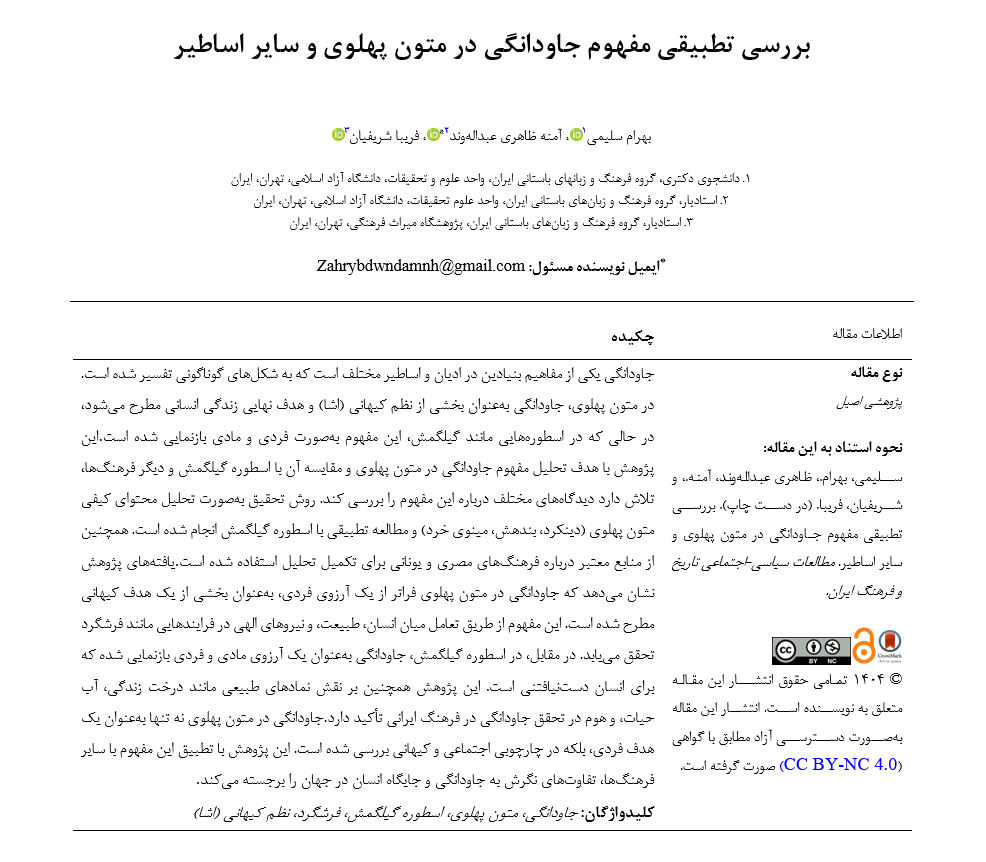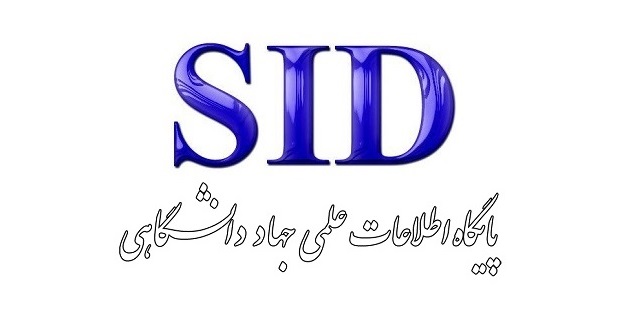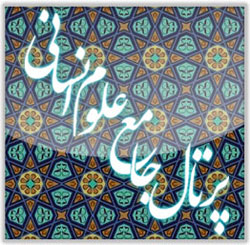A Comparative Study of the Concept of Immortality in Pahlavi Texts and Other Mythologies
Keywords:
cosmic order (Isha), carpet-weaver, Gilgamesh myth, Pahlavi texts, immortalityAbstract
Immortality is one of the fundamental concepts in various religions and mythologies, interpreted in different ways. In Pahlavi texts, immortality is presented as part of the cosmic order (Asha) and the ultimate goal of human life, whereas in myths such as Gilgamesh, this concept is represented in an individual and material form. This study aims to analyze the concept of immortality in Pahlavi texts and compare it with the Gilgamesh myth and other cultures, exploring diverse perspectives on this notion. The research methodology involves a qualitative content analysis of Pahlavi texts (Dēnkard, Bundahišn, Mēnōg ī Xrad) along with a comparative study of the Gilgamesh myth. Additionally, reputable sources on Egyptian and Greek cultures have been utilized to complement the analysis. The findings of this study indicate that, in Pahlavi texts, immortality is not merely an individual aspiration but is framed as part of a cosmic objective. This concept is actualized through the interaction between humans, nature, and divine forces in processes such as Frashkart (Renovation). In contrast, in the Gilgamesh myth, immortality is depicted as a material and personal desire that remains unattainable for humans. The study also highlights the role of natural symbols such as the Tree of Life, the Water of Life, and Haoma in achieving immortality within Iranian culture. Immortality in Pahlavi texts is examined not only as an individual goal but within a broader social and cosmic framework. By comparing this concept with those of other cultures, this study underscores the differences in perspectives on immortality and humanity’s place in the world.
Downloads
References
Ashrafi, H. (2001). The Egyptian Book of the Dead: A Study of Egyptian Beliefs About Death and Eternal Life. Dot Publishing.
Azarfar, J. (2010). Denkard: Translation and Commentary. Hermes Publications.
Bahar, M. (2013). Bundahishn: The Zoroastrian Book of Creation. Toos Publications.
Christensen, A. (2008). The Kayanians. Scientific and Cultural Publications.
Dustkhah, J. (1991). Pahlavi Texts: Selected Works. Moin Publications.
Farahvashi, B. (2011). Minovi Khrad: A Study of Ancient Iranian Thought. University of Tehran Publications.
Fouladvand, A. (2001). The Epic of Gilgamesh. Kharazmi.
Malekian, M. (2009). Myths of the World. Scientific and Cultural Publications.
Nazari Farsani, M. (2018). The Eighth Book of Denkard. Farvahar Publications.
Rezaei, M. (2014). Denkard IV. Scientific Publications.

Downloads
Published
Submitted
Revised
Accepted
Issue
Section
License
Copyright (c) 2025 Bahram Salimi (Author); Ameneh Zaheri Abdolhavand (Corresponding Author); Fariba Sharifian (Author)

This work is licensed under a Creative Commons Attribution-NonCommercial 4.0 International License.







